Consider the following figure and questions.

 Using KCL, I found vsum(t) = −v1(t) − v2(t). The transfer functions are TLPF(jw) = vo1(t)/vsum(t) and THPF(jw) = vo2(t)/vsum(t). However, I am stuck while finding vo1(t) and vo2(t). I am not sure how to apply KCL at the common filter node (since the output current of the amplifier is unknown) and I don't think I can apply KVL to the right LPF + HPF loop since it's open (or is it? What do the ground symbols indicate?)
Using KCL, I found vsum(t) = −v1(t) − v2(t). The transfer functions are TLPF(jw) = vo1(t)/vsum(t) and THPF(jw) = vo2(t)/vsum(t). However, I am stuck while finding vo1(t) and vo2(t). I am not sure how to apply KCL at the common filter node (since the output current of the amplifier is unknown) and I don't think I can apply KVL to the right LPF + HPF loop since it's open (or is it? What do the ground symbols indicate?)
